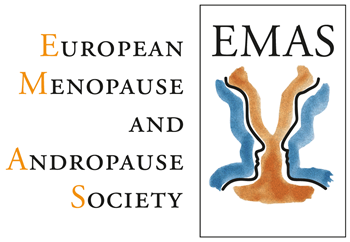Amsterdam, 4 April 2020 – A new clinical guide by the European Menopause and Andropause Society (EMAS) published in the journal Maturitas provides an evidence-based approach to menopausal symptom management in women with dyslipidemias (abnormal lipid levels), as well as to the management of dyslipidemias in postmenopausal women.
Dyslipidemias are quite common disorders, constituting one of the major risk factors of cardiovascular disease
worldwide. The term “dyslislipidemia” encompasses a wide range of disorders, such as high serum concentrations of low-density lipoprotein (LDL) cholesterol (LDL-C) and/or triglycerides and lipoprotein (a) [Lp(a)], as well as low concentrations of high-density lipoprotein (HDL) cholesterol (HDL-C), which is protective against cardiovascular disease. Dyslipidemias may be either inherited (primary) or acquired (secondary). The latter category includes secondary causes such as endocrinopathies (i.e. diabetes, hypothyroidism), chronic kidney disease, infections (human immunodeficiency virus), liver cirrhosis, alcohol abuse, smoking, and drugs.
Transition to menopause has been associated with an increased risk of cardiovascular disease, although it is unclear if it is the consequence of the ageing process or menopause per se. This risk, which is most evident in women with early menopause or premature ovarian insufficiency (menopause before age 45 or 40 respectively), is the corollary of a composite of risk factors, such as abdominal obesity, insulin resistance, elevated blood sugar and atherogenic dyslipidemia. The latter is characterized by an increase in TC, LDL-C, triglycerides, as well as a decrease in HDL-C concentrations.
Menopausal hormone therapy (MHT) is the most effective therapy for the management of menopausal symptoms and urogenital atrophy. MHT consists of estrogens, either alone, or in combination with a progestogen in women who have not removed their uterus. Estrogens reduce TC, LDL-C and increase HDL-C concentrations. This effect is more prominent with oral administration of estrogens. However, oral estrogens increase triglyceride concentrations. Transdermal rather than oral estrogens are therefore recommended for women with hypertriglyceridemia. Regarding progestogens, micronized progesterone or dydrogesterone do not affect the lipid profile, and they should be the first option in women with dyslipidemia. Finally, when MHT is contraindicated, antidepressants are a second – line option for the management of menopause. In women with dyslipidemia, fluoxetine and citalopram exert the most favourable effect on the lipid profile, and should be preferred in women with dyslipidemia over other antidepressants.
The complete clinical guide “Menopause symptom management in women with dyslipidemias: an EMAS clinical guide” is published in Maturitas, published by Elsevier.

